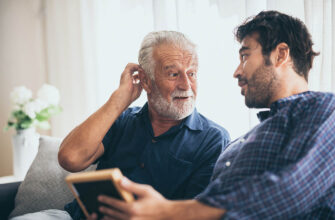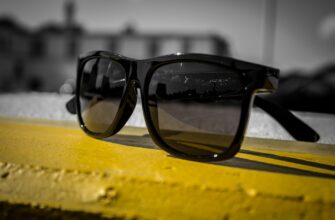
1. The Eyes
Because they can tell so much about a person’s feelings or thoughts, the eyes are usually referred to as the “windows to the soul.”
Observing another person’s eye movements while you are conversing with them is a natural and crucial step in the communication process.
Common cues to look out for include how often someone is blinking, whether their pupils are dilated, and whether they are making direct eye contact or avoiding their gaze.
Pay attention to the following eye cues when analyzing body language.
Eye Gaze
When someone is speaking to you and stares into your eyes, it shows that they are engaged and paying attention. However, sustained eye contact can appear dangerous.
On the other hand, breaking eye contact and glancing away repeatedly may be a sign that someone is preoccupied, uneasy, or trying to hide their true emotions.
Blinking
Although blinking is a normal reflex, you should be aware of if someone is blinking excessively or too little.
People frequently blink more quickly when they are anxious or uneasy. Blinking infrequently could be a sign that someone is consciously attempting to control their eye movements.
A poker player might, for instance, blink less frequently in an effort to appear unimpressed with the hand he was given.
Pupil Size
A very delicate nonverbal communication cue can be the size of the pupils. While environmental light levels regulate pupil dilation, emotions can occasionally also induce minute adjustments in pupil size.
You may be familiar with the term “bedroom eyes,” which refers to the gaze someone makes when they are attracted to another person. For instance, noticeably dilated eyes can signify attention or even arousedness.
Glances
Additionally, keep an eye out for someone’s glances, which may hint at their desire for something. Indicators that someone wants to go or that their time is up include looking at the door or the clock.
2. The Mouth
Mouth gestures and attitudes are also very important for interpreting body language. When someone chews on their bottom lip, for instance, it might be a sign of anxiety, dread, or insecurity.
If someone is coughing or yawning, covering one’s mouth may be an attempt to be polite, but it could also be an attempt to hide an unflattering scowl.
Although smiling is one of the best body language signals, it may also be taken in a variety of ways.
A grin can be sincere or it can be a way to convey cynicism, sarcasm, or fake delight.
9
Pay attention to the following mouth and lip signs when analyzing body language:
- Pursed lips.
Lips that are tightened could signify disgust, approval, or mistrust.
- Lip biting.
When someone is tense, apprehensive, or worried, they may occasionally bite their lips.
- Covering the mouth.
People may cover their mouths to prevent grinning or smirking when they want to conceal an emotional response.
- Turned up or down.
Subtle alterations in the mouth can sometimes serve as a cue to how someone is feeling. A person may be feeling cheerful or optimistic if their mouth is slightly tilted up. On the other side, a mouth that is slightly turned down can signify melancholy, displeasure, or even a grimace.








